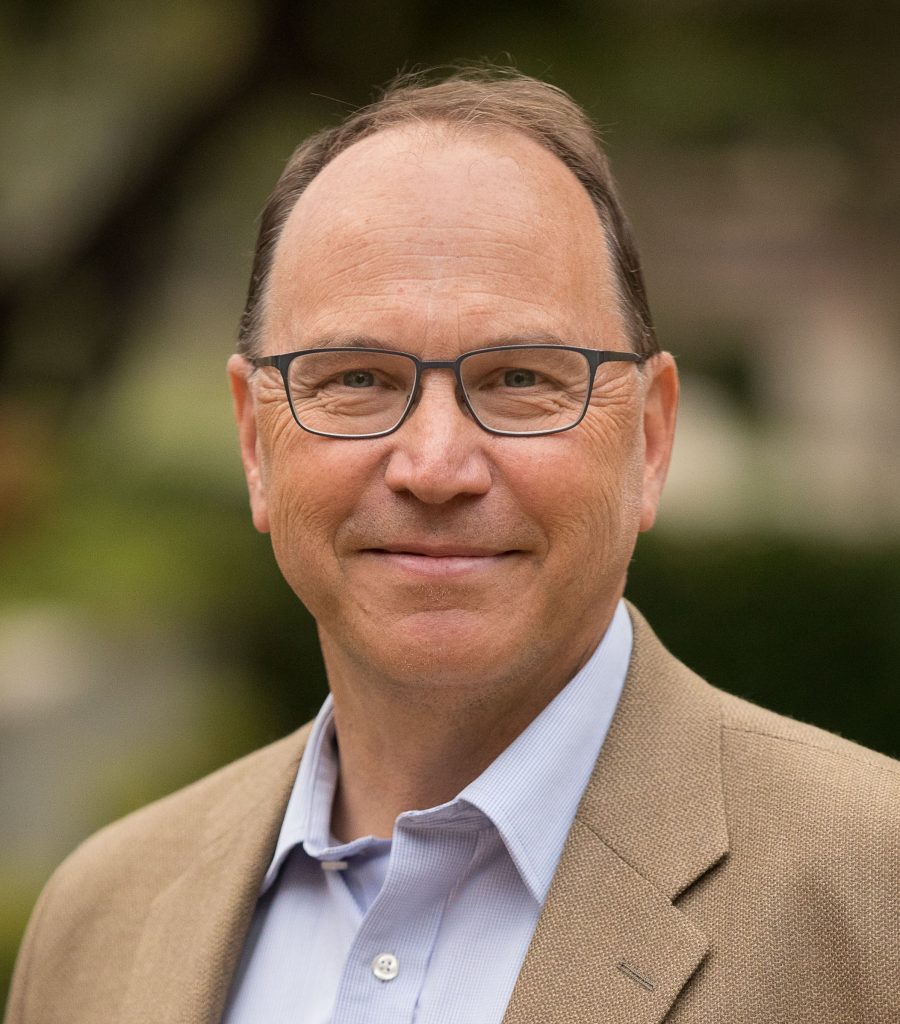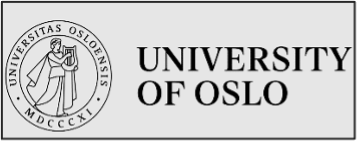Category Archives: Blog
DIGITAL CREATIVITY CONFERENCE
CLE AND THE UNIVERSITY OF OSLO
15-17 June 2023
KEYNOTE SPEAKERS
Timothy R. Tangherlini
Professor of Scandinavian, UC Berkeley
Conference Speaking Engagement: Good, Bad or Creative? Deeplearning, Kpop and TikTok challenges
Professor Tangherlini’s research focuses on folklore, and aspects of informal culture in Scandinavia, with a primary focus on Denmark. A folklorist and ethnographer by training, he has worked extensively on understanding the circulation of informal storytelling in both agrarian and urban communities, and the manner in which stories both reflect and inform changes in social, economic and political organization. He has developed various computational methods for the study of topic change and geographic distribution in large folklore corpora. These include standard descriptive statistical methods, the application of probabilistic modeling, natural language processing techniques, and the use of historical geographic information systems (hGIS).
Tejaswinee Kelkar is a music technologist, teacher and vocalist. She holds an associate professor ii position at the University of Oslo, where she teaches in the Music, Communication and Technology masters program. She works as a data analyst at Universal Music Norway, working with programming tools for business intelligence for Norway and reporting solutions for other territories. She finished her PhD with the RITMO center of excellence at University of Oslo in November 2019. Her research interests are melodic cognition, motion-capture and musical-cultural analysis. Her research focus is on how aspects of melodic perception are illustrated through multimodality, and linguistic prosody.
CALL FOR PROPOSALS (NOW CLOSED)
Cultural Literacy Everywhere is delighted to announce its 2023 Conference on the topic of Digital Creativity. It will be held on 15–17 June 2023 as a hybrid event co-hosted by the University of Oslo. You are invited to send in a proposal for a 10-minute discussion paper, a show-and-tell demonstration, or a 1-hour interactive workshop by the deadline of Saturday 21 January 2023 at noon GMT/UTC.
In Between Past and Future (1961), Hannah Arendt wrote: ‘the world we have come to live in […] is much more determined by man acting into nature, creating natural processes and directing them into the human artifice and the realm of human thought’. According to Charles Travis (2018), Arendt was anticipating our current cultural landscape, characterized by an increasing confluence of analog, digital, and natural environments. Since the 1980s, we have witnessed a steady expansion of the ‘digital humanities wave’ – from the digitization of historical or cultural material to digital analysis and visualization and currently how humanities discourses influence applications and codes.
In this environment of the Digital Anthropocene, with its transformative technological and critical practices, we can detect emerging creative trends haunted by a sense of threat and challenge. This mix of curiosity for the new and fear of loss and nostalgia appear in the academic domains of the humanities and social sciences – now often in close collaboration rather than a perpetual collision with areas such as genetics and bioinformatics. In addition, cross-disciplinary activities of knowledge production are creative endeavours within the digital landscape and big data environment, where they respond to a novel need to explore and assess not only the ontological implications of the digital age but also our roles in making it.
This two-day Conference is designed to generate active discussion on creative practices in the digital age, focusing on thinking, talking, and showing what such practices can be or become.
Proposals might include the following:
- Digital humanities activism and hashtag journalism
- The role of the digital in diaspora cultures
- Data science and visualization
- Human-machine co-creation: The possibilities of AI in the arts and humanities
- Creative computing as a tool for learning and discovery in the humanities and social sciences
- Creativity and cognition
- Sonic material and new forms of social critique
- Digital creativity, affect, and pleasure
- The role of memory and nostalgia in the digital age
- Digital narratives and life writing
- Digital creativity and ethical considerations
HOW TO APPLY: We invite 300-word proposals in English for a 10-minute presentation or a show-and-tell demonstration or 50-minute interactive workshop. Please include your presentation title, your name, affiliation (if applicable), and a short biography (max. 100 words). Please indicate on your submission whether you would like to participate in person or online. Send this as an email attachment to Dr Aino Rinhaug (aino.heerakweon@gmail.com) and Prof Naomi Segal (naomi.segal@sas.ac.uk) by the deadline of Saturday 21 January 2023 at noon GMT/UTC. No late proposals will be considered.
LOCATION: The conference will take place at the Voksenåsen conference hotel in the Oslo Forest; subsidised charges will be announced at a later date. Please note: Norway is not a member of the EU.
CLE MEMBERSHIP: You must be a member of CLE in order to attend the Conference. To join CLE see Sign up for Membership.
CONFERENCE FEES: Standard £100; Unwaged/Hourly paid £50.
BURSARIES: Several bursaries are available; the successful applicants will receive an award plus fee-waiver. The competition will open on Tuesday 31 January and close on Tuesday 14 February 2023.
Any enquiries: please email Naomi Segal (naomi.segal@sas.ac.uk)
or Aino Rinhaug (aino.heerakweon@gmail.com)
Conversations
Conversations is a new series focusing on the interaction between artists and social environments. It builds on an earlier blog by the Special Interest Group ‘Cultural Literacy and Social Futures’, linked to an Arts Council funded project on behalf of Clifton Park Museum, Rotherham entitled ‘Revealed Roots, Concealed Connections’:
The blog described how, in August 2021, British government’s policy on the function of museums had changed over the previous decade. Rather than viewing such institutions as essentially publicly funded with the objective of preserving archives of historic interest to be viewed by an indeterminate, metrically monitored visitor base, The National Museum Directors’ Council (NMDC) https://www.nationalmuseums.org.uk/ acknowledged the diverse character, size and relative national importance of the institutions for which they were responsible. Apart from promoting virtual access which would enable greater flexibility in the way artefacts were made available to a wider public, the NMDC’s 2021 report ‘Museums Matter’ stressed regional museums’ civic role as physical hubs.
According to the report, museums were to become social centres which reflected the everyday lives of people in local neighbourhoods. They would reinforce their identity as active citizens by increasing their sense of belonging to mutually imagined spaces. They would cause people to think more deeply about the meaning of their daily existence in a way which would not simply increase their stock of knowledge but be self-fulfilling to people in practical terms as members of a wider community. In short, the 2021 NMDC report was urging museums to develop levels of cultural literacy amongst groups of different types and in so doing to promote shared understanding.
https://www.the-liminal-space.com/all-projects/museums-of-the-future
The NMDC report went on to say that smaller, municipally based, regional museums should be less dependent on public resources. Arts Council funds were being cut back. Museums should be more autonomous in their operations. They should involve the public more directly in exhibition design and curation. They should be more open, less static and inward looking, more demonstrative of the present as a dynamic reflection of the past through more creative, more activity-led access to their archives. Their physical spaces should be more readily accessible for hands-on activities which brought people together as memorable expressions of their day to day preoccupations. This policy initiative has since been vigorously followed through. As the Museums Association on behalf of The Esmé Foundation now puts it
‘Overwhelmingly, our research has revealed a desire for a fundamental shift away from thinking of museology as strictly linked to place, space and assets, towards an emphasis on how these elements create meaningful and sustained interactions with people and communities.’
Against a background of economic stringency, serious effort has since been made by The Museums Association and UK Research and Innovation (UKRI) to address a number of core questions. These questions have arisen in the wake of the pioneering work of François Matarasso[1] and the game-changing Arts and Humanities Research Council (AHRC) report compiled in 2016 by Geoffrey Crossick and Patryzja Kaszynska[2]. How should local institutions go about enabling local people to realise creative potential they didn’t know they had to the benefit of the community as a whole? How should improvements in the quality of their life experience be satisfactorily assessed? Where does museums’ responsibility for promoting social change begin and end? What are the financial implications for smaller municipal institutions, borough councils and their related centres of learning if they are to meet the challenges just outlined? What should be the role of university-led research in making sense of the interrelationship between economic planning, demographics and the civic value of culture at the individual and collective levels? An inevitable tension continues to exist between economic priorities and civic well-being, one in which local government departments, developers and party political interests are pitted against each other at the expense of projects which are part of integrated, collaborative, and above all sustainable strategies.
At the time of writing, the UK Department of State responsible for the funding of museums and galleries: The Department of Digital, Culture, Media and Sport (DCMS) strongly emphasises technological development as a key element in the growth of the so-called ‘creative industries’
https://www.ukri.org/news/ukri-launches-digital-innovation-and-engagement-fund-for-museums/
Interactive gaming and instantly communicable mediatised performance have become inexpensive, ready-made, creative vehicles in which individuals have control over their cultural output alongside existing archives. Museums, Galleries and other local cultural spaces represent accessible venues in which such outputs can be physically rehearsed and displayed as collaborative events. However, they demand technically trained personnel, appropriate equipment and new forms of curation if such products are to be supported to best advantage. While many might argue that they detract from the personal and social enrichment afforded by real life experience, the obvious compromise is to seek a creative combination between the two.
Stakeholders at every level are aware of the complexities and financial constraints involved. ‘Co-participation’ and ‘Engagement’ have become watchwords of policy initiatives governing funding by national agencies in the UK such as DCMS, the national Arts Councils, and UKRI, charitable organisations such as The Esmé Fairbairn Collection, The Rowntree Foundation, and larger grant-awarding agencies such as The Leverhulme Trust. Under the aegis of the recently established Centre for Cultural Value (CCV), guidelines have been posted which spell out in detail what makes for effective practice-led research carried out by universities in collaboration with local agencies:
https://www.museumsassociation.org/app/uploads/2020/06/28032017-museums-change-lives-9.pdf
At the level of national media, much is made of popular spectacle: choral singing, ballroom dancing and cookery competitions, gardening, and craft repair. Such immediately recognised manifestations of popular culture are complemented by fragmented on-line, mostly privately initiated networks funded by subscription which focus on reading, writing, music-making, drawing, photography, drama, dance, rambling and so on. Festive ‘events’ attract crowds. On the other hand, institutionally embedded, externally funded projects reach out to local communities on a more ambitious yet more focused and less expensive scale. Associations such as the Centre for Cultural Value, the National Council for Cultural and Academic Exchange, Cultural Literacy Everywhere and Liminal Space offer platforms featuring case studies for what is now a burgeoning field.
Notwithstanding these trends in academic and cultural policy, the incorporation of professional artists into local cultural projects continues to encounter serious obstacles. Much space is given to top-down cultural agendas which have attracted global media as opposed to practical deas which emanate from local people themselves. For the latter to have lasting leverage, it is normally necessary for artists working on commission to collaborate with members of the public. Their mission is typically to translate existing aspects of daily life into artefacts which literally take on iconic status and become part of the social and economic fabric. In this environment, ‘art’ is more than a pastime which fosters a sense of well-being. It is a catalyst where social practice itself becomes a work of art, one in which artists are themselves socially engaged and are given a key role as cultural coordinators by local political institutions.
The purpose of this series of ‘conversations’ is to give voice to the experience of artists who have taken the initiative to co-ordinate collaborative work of the kind just described. The environments in which they have operated in the recent past are different, as are the types of activities which have emerged as potentially iconic. The nature of the collaboration differs too, as do the institutions with which the artists work. The main issues, however, are endemic: sustainability of impact, access to funding, internal political priorities, functionality of space, legitimacy of roles and relevance. It is to be hoped that the artists’ commentaries will shed further light on the potential dynamics and long-term outcomes of practice-led research.
Robert Crawshaw
[1] François Matarasso A Restless Art (London: Gulbenkian Foundation, 2019)
[2] Geoffrey Crossick & Patryzja Kaszynska Understanding the Value of Arts and Culture (London: AHRC, 2016)
Affect re-visited: finding the balance between theory and practice
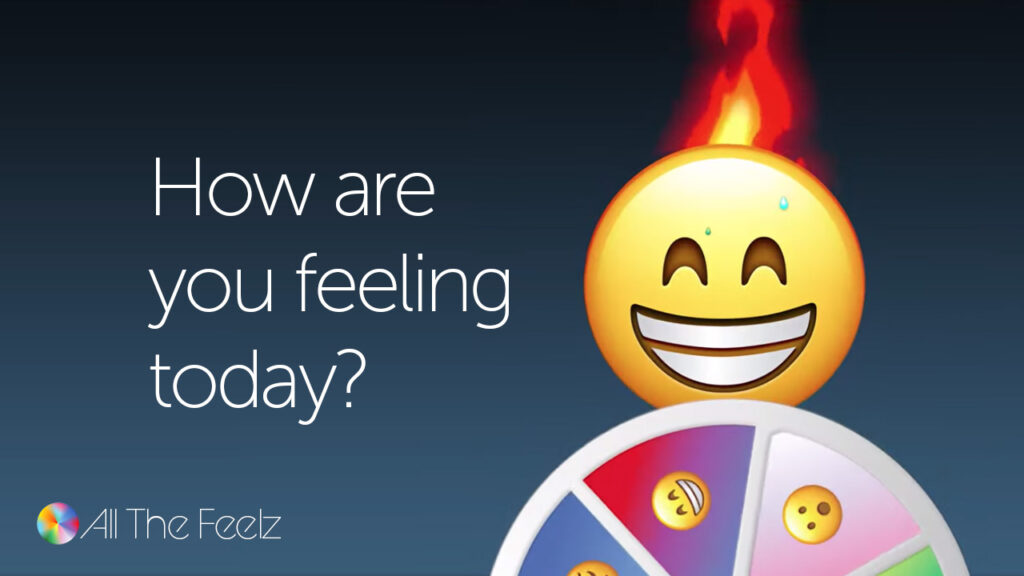
This isn’t really a blog. Or even an essay. More a series of disconnected thoughts arising out of belated readings on affect theory and its implications for Cultural Literacy Research. As a SIG coordinator and consultant to universities on research bidding, I continue to be preoccupied by the impact of ‘the affective turn’ on the social dynamics of definable, site-specific groups in society. Much recent academic and journalistic commentary has drawn attention to the significance of emotion in the formulation of public and private opinion. Amongst other things, it has emphasised the divisive impacts on western societies of populism and collective violence. It has highlighted the disregard of legally grounded democratic principle by autocratic leaders and the nefarious practices of international corporations in the political and commercial manipulation of citizens’ feelings. For many liberal geopolitical commentators, ‘post truth’ has marked the decline, if not the death-throes of liberal democracy.
This awareness has not, however, inhibited the growing influence of ‘affect theory’ within social science itself. In fact, it may well have promoted it. As Ernst van Alphen and Tomáš Jirsa put it in the eloquent introduction to their edited text How to do things with Affect:
“When I hear the word affect I reach for my Taser. An unfair reflex, I know, but affect seems to me a prime medium of ideology today— an implanted emotionality that is worse—because more effective—than false consciousness”
Foster 2012 [1]
The comment was voiced live ten years ago by the art historian Hal Foster in a recorded roundtable on Art and Architecture. Van Alphen and Jirsa for their part were using it as a rhetorical counter-argument to their own polemical objective, namely to devise a method which enables ‘affect’ to be evaluated in ‘operational’ rather than primarily conceptual terms. In their words:
“Rather than providing definitions of what affects are (not), we find it more useful to focus on what precisely affects do, how they operate within aesthetic forms and cultural practices”
Van Alphen and Jirsa 2019:1 [2]
Evidently they were fed up with philosophical debates about the nature of emotion, its relationship to knowledge and understanding and the recent preoccupation with affect as a culturally constructed process. Their formulation chimes well with the goal of the SIG ‘Cultural Literacy and Social Change’. As probably overstated on the CLE website, the so-called ‘Culture SIG’ focuses on the link between cultural theory, literacy in the widest sense and tangible social outcomes. Whether you like it or not, ‘affect’ in its various iterations then presents itself alongside economics, politics and history as a core factor which cannot be overlooked: not simply because it has become modish in academic circles to turn to Deleuze and Guattari and others as an explanation of what has happened to Western Culture since the 1970s[3], but because the impact of the ‘affective turn’ has become such a palpably real aspect of mediated social behaviour. Its consequences are felt in different ways in different locations at different levels of society, but in almost all cases as an accessible response to widespread insecurity and uncertainty about the future.

In the face of overwhelming geo-political complexity and the apparent failure of the neo-liberal system to resolve global economic issues, one reaction on the part of social analysts has been to focus on the local rather than the global, to review the relationship between everyday life in community and the types of cultural activity likely to promote positive change at the micro-level through closely targeted research. Money is short. Practice-led research is under scrutiny. It remains the poor relation of fundamental, scientific investigation and the methodological principles which go with it. As is now widely acknowledged, the response from policy-makers is to encourage ‘co-participation’, viz. the active involvement of ‘ordinary people’ in socially grounded ‘research projects’, projects which raise the profile of their medium-term contribution to the ‘quality of life’ within and between the social groups of which they are part. Such a focus immediately raises questions about the relationship between the empirical observation of social practice and the theory which underpins it. If practice is to be ‘informed’ by theory, on which theoretical school should it draw? Or, to put the question differently, how should different theoretical approaches be most effectively combined in order to offer the most cogent blueprints for cultural action.
A fundamental axiom of ‘Affect Theory’ is that the attempt to drive an epistemological wedge between ‘emotion’ and ‘reason’ is not tenable in practice. As the pre-romantic, agnostic writers of the European Enlightenment amply demonstrated, cognition itself depends on sentient processes which link mind and body. By extension, relations between individuals and groups are themselves ‘embodied’ through the internalisation of shared experience. The recent extreme version of the latter principle underpinning affect theory holds that close intra-group associations are ‘pre-lingual’. Philosophically as well as physically, feeling precedes thought.
Logically, for non-believers in Freudian, Marxist or Behaviourist explanations, or indeed informed sceptics in general, the motivational essence which fuels the mechanisms of inter-personal dynamics escapes objective identification. It has to be felt before being ‘captured’ and thence communicated to others in symbolic terms, eventually to become collectively internalised as ethical, religious or ideological principles.
That symbolic ‘capture’ may be abstract and extremely sophisticated – witness the digital algorithms which structure communication within institutions, minutely categorise our behaviour and manipulate our collective emotional responses to experience. In everyday life on the other hand, the affective dimension is best manifested through language or, sociologically speaking, situated discourse whose ‘frames’ or ‘activity types’ operate as inter-modal cultural lenses combining music, physical performance, spatial architecture and material artefacts of all kinds. Following Deleuze and Guattari’s use of the term ‘agencement’, Slaby et al. refer to their conceptualisation of local relationality as ‘affective arrangement’:
“Affective arrangements are heterogeneous ensembles of diverse materials forming a local layout that operates as a dynamic formation, comprising persons, things, artifacts, spaces, discourses, behaviours, and expressions in a characteristic mode of composition and dynamic relatedness. Our approach facilitates microanalyses of affective relationality as it furthers both an understanding of the entities that coalesce locally to engender relational affect, and also the overall “feel,” affective tonality or atmosphere that prevails in such a locale. The proposed concept is an analytical tool—provisional and open-textured yet sufficiently determinate—to help researchers get a grip on complex inter- or intra-actional settings in which affect looms large.”
Slaby, Mühlhoff and Wüschner 2017:2[3]
However, from Rousseau through Vygotsky and Piaget to Froebel, Schutz and beyond, it is clear that ‘affect’ is much more than a state of mind. While in strictly clinical or philosophical terms, it may be said to precede action or even rational thought, once engaged, it becomes ‘activity-led’. Ideally, affect and activity enter into a virtuous circle which by definition extends beyond the individual, one in which group interaction is necessarily involved. It follows that the first challenge confronting the would-be ‘ethnographer of affect’ is to identify the salient everyday activities which constitute the ‘cultural glue’ of communities and closely to examine the processes by which these are symbolised and collectively represented. To that extent, the development of cultural literacy on the part of citizens and researchers alike becomes an exercise in social geography, designed to reveal the affective chemistry of belonging. The attempt to define this chemistry in national terms very quickly leads to stereotypes which for far too long have afflicted the study of intercultural communication. One striking aspect of pluralistic social fragmentation is that the insignia of ‘affective salience’ filtered through language and behaviour are increasingly context-specific and local in character. They need to be understood accordingly, on their own terms and in relation to each other by using the same heuristic instruments across the local board.Most of the above is blindingly obvious in principle. The problem comes when seeking to apply it in practice, most especially in finding ways to identify and evaluate the affective determinants of social connectedness in terms which are meaningfully communicable and theoretically coherent. All too frequently, the impressionistic, meta-discursive store of hyperbolic adjectives and fanciful metaphor quickly runs dry, to the point where in extreme cases the self-referential, reflexive style of affective analysis runs the danger of defeating its own object by simply replicating itself. Which is why of course, data and creative artefacts relevant to capturing the affective forces which bind and separate groups in society should emanate authentically from the voices of real people interacting in real-life situations. Such a move inevitably changes the role of the soi-disant ‘researcher’ who then becomes a creative yet critically responsible facilitator or mediator who gives meaningful voice to others rather than a scientist seeking empirically to demonstrate an anticipated truth. Thereby, researchers are agents in a catalytic process which enables cultural literacy to define itself.
The epistemological challenge which this discursive double-bind represents for researchers is addressed head on by the exploratory work of the Collaborative Research Centre (SFB 1171) Affective Societies at the Freie Universität Berlin. In fact, the main object of this blog is to draw colleagues’ attention to the clarity of exposition brought to the Centre’s on-line publications. Not only do the group’s outputs retrace the historical development of the relationship between thought and emotion derived from the work of Spinoza, Nietsche, Bergson and latterly Deleuze and Guattari, Nancy Fraser, Judith Butler, Sarah Ahmed, Brian Massumi and others; they also consider in a series of essays the impact of their legacy on current political culture.
The Berlin Group’s collective goal is to illustrate what is meant by the phrase ‘affective relationality’ when it is translated into real-life contemporary examples. It addresses such questions as the extent to which it is possible to reconcile antagonisms within and between specific social groups. As the quotation above illustrates, it highlights the need to identify material environments which foster ‘agencement’, that is sites where dynamic, embodied expressions of feeling can lead to new and sustainable affective formations: not of course for their own sake but as part of a network of activities involving different agents whose diverse outlooks and interests within a bounded local environment are complementary to each other in economic as well as in civic terms. Profuse examples of this kind exist in highly diverse contexts, despite the setbacks of the last two years. They should be identified, critically mediated and their ingredients more widely disseminated by independent research associations such as CLE so that their social and cultural benefits can be shared. I hope that the different case studies coordinated by members of this Special Interest Group will go some way towards meeting that objective.
Robert Crawshaw, 6th April 2022
References
See below a small sample of recent papers on ‘Affect’ published by members of The Collaborative Research Centre (SFB) 1171 ‘Affective Societies’ at the Freie Universität Berlin, funded by the German Research Foundation/Deutsche Forschungs Gemeinschaft (DFG). The papers can be accessed directly by clicking on the titles.
| The Politics of Affective Societies. An Interdisciplinary Essay – Hauke Lehmann, Jonas Bens, Gabriel Scheidecker, Gerhard Thonhauser, M. Ragıp Zık, Aletta Diefenbach, Dina Wahba. |
| Introduction: Affective Societies – Key Concepts – Jan Slaby. |
| Relational Affect: Perspectives from Philosophy and Cultural Studies – Jan Slaby. |
| Emotion, emotion concept – Christian von Scheve, Jan Slaby. |
[2] https://doi.org/10.1163/9789004397712_002
[3] Gilles DELEUZE and Félix GUATTARI L’Anti-Œdipe: Capitalisme et Schizophrénie (Paris: Les Editions de Minuit, 1972/1995)
[4] Jan SLABY, Rainer MÜHLHOFF and Philipp WÜSCHNER ‘Affective Arrangements’ in Emotion Review, 2017 p.2
Digital Memoir Exhibition 2022
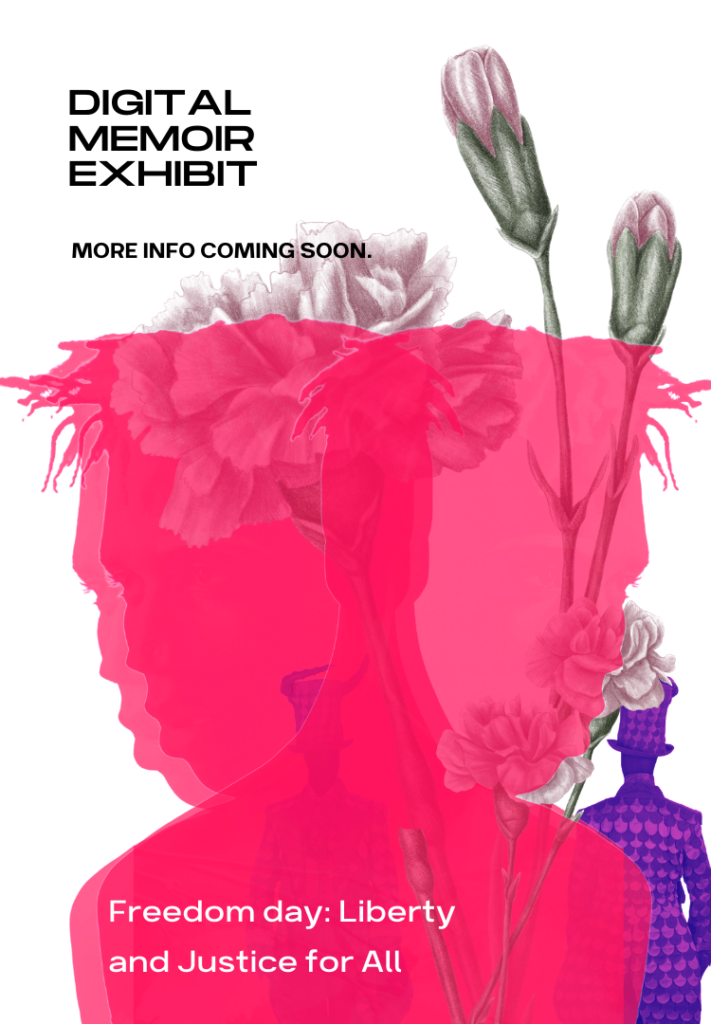
An International Call for Entries coming soon for the Digital Memoir Exhibition 2022.
Participants will be asked to submit a memoir that reflects a personal moment of cultural freedom that was critical to determining their personal identity.
o Digital artifacts will be submitted for juried review to include: Poetry, graphic novels, collage, essay, visual and digital art, etc.
o Selected pieces will be curated and displayed for the summer event that will be hosted digitally. Participants will submit recorded presentations of the works selected which will be presented during the weeklong, exhibit period.
o To culminate the event, live presentations will punctuate activity which will also include live readings of written works and artists’ statements.
Workshops
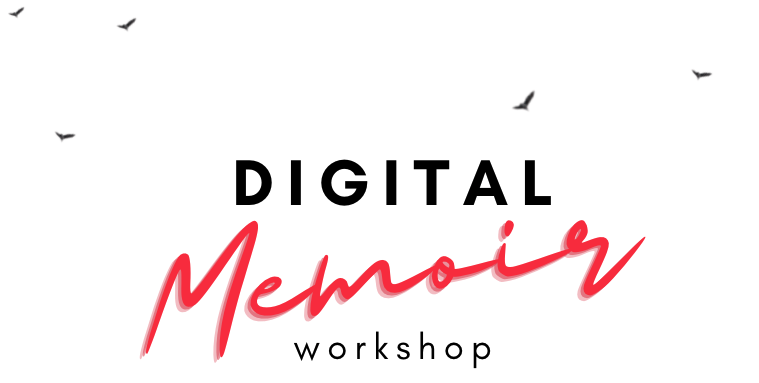
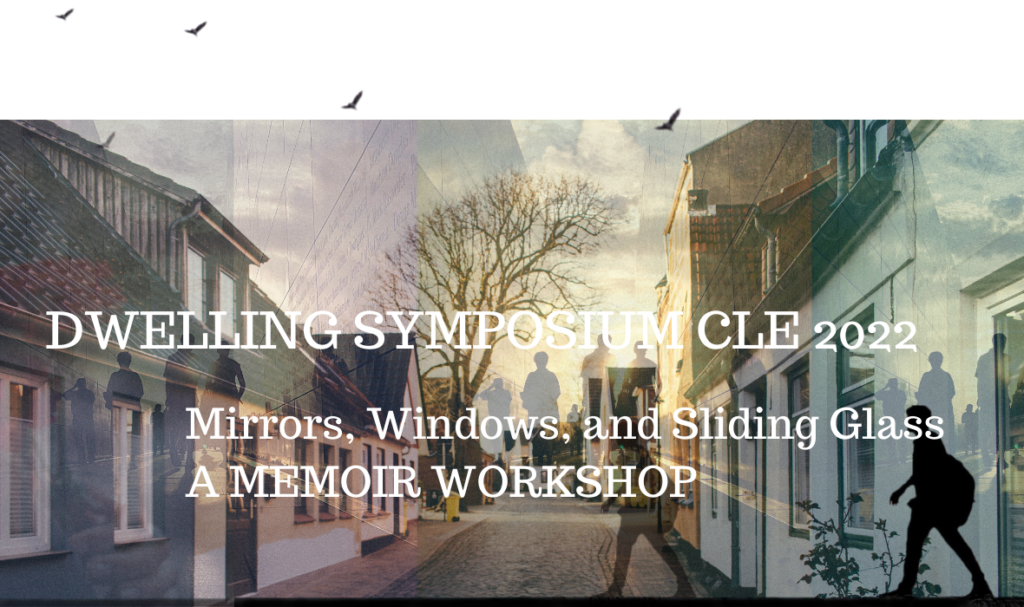
“Mirrors, Windows, and Sliding Glass Doors,” from the essay of the same title, by Rudine Sims.
For this hour-long, interactive workshop, participants will explore the memoir as a narrative creative form. For this occasion, participants/creators will recount significant experiences through meaningful dwellings from their life. To frame this experience, a selection of memoirs will be shared through which participants will discuss and reflect on the significance of dwellings in their own experience as relates to the development of their personal and cultural identity. Following the discussion, a series of questions or prompts will be given from which each can choose to create a memoir of their own. Works in forms and formats, including visual collage, poetry, and/or prose will be encouraged and explored.
Participants will come away with an understanding of the genre, how it is distinct from others, like autobiography and ethnography, as well as how memoir can take shape in other forms and formats including collage, graphic novel, and poetry. Works will be saved and chronicled (if the participant so chooses), digitally, for posting on the CLE Cultural Rememory microsite.
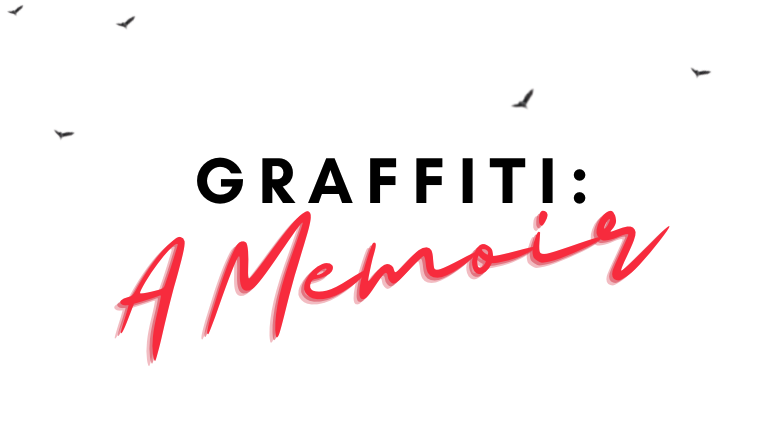
“Graffiti: A Memoir”
“We gabbed through the night, gossiping, playing truth or dare, and applying make-up while we crowded around the powder room mirror of our home in, Orange County, California. The little bathroom was generic, like most of the tract homes on the block, and of the era. All the fixtures; sink, faucet, and Formica countertops, were standard issue. But there was one element of the décor that made the restroom at 709 Concord Street distinct. One wall had been decorated with graphic wallpaper in a design that simulated graffiti. Yeah, that’s right, graffiti. In our sterile, cookie-cutter, suburban, tract home, our bathroom was decorated to look as if it had been tagged.”
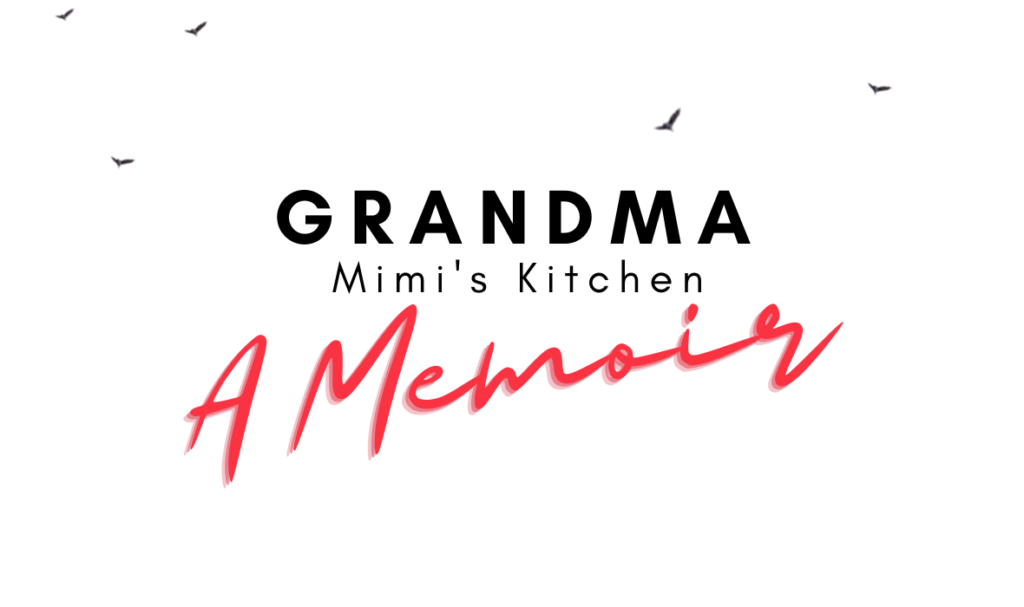
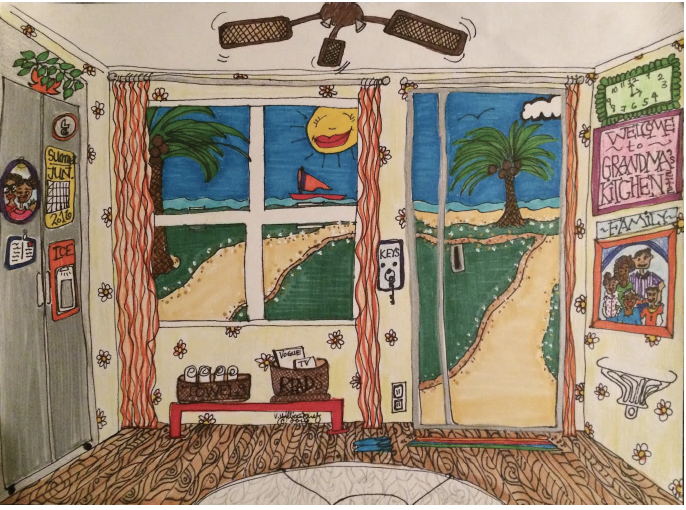
From the Artist’s Statement:
“To create this “Home” scene, I meditated on my own childhood and days spent at my grandmother Mary Evelyn (a.k.a. Evie) Givens’ house. Evie’s house was my home away from home, and time with Evie was always an adventure. Afternoons were spent in discussion of big ideas, learning, and fun. It was Evie who encouraged me in my youth to “write something every day.”
Scrabble was most always on the agenda at Evie’s, and day trips were frequent. An avid fan of the arts, Evie and I would travel by bus – Evie didn’t drive— to museums, galleries, and gardens in my native Southern California, filling my childhood with vivid memories of love, laughter, and light. Even when no one was home, as was the case while she and I were out having adventures, Evie’s cluttered yet tidy home was a cherished space that I return to in my heart even now as an adult.”
DIGITAL MEMOIR EXHIBITION 2022
COMING SOON!
Museums, Legacy, Art, Culture and Community
‘Revealed Roots, Concealed Communities’
A project in hand
Public on-line reports of the last ten years on the function of museums in society make interesting reading. They reveal a shift in priorities which in an ideal world might normally have been expected to attract additional public funding. In reality, the opposite is true. Given the state of the UK economy post-Covid and the vagaries of Brexit, the contrast in style between past and present documentation reflects a welcome improvement in messaging but fails to illustrate detailed ways in which its recommendations can best be realised in practice. The present case study seeks in a small way to fill that gap. It offers a fascinating insight into the role played by creative artists in transforming the environments in which museums and local communities can interact and, in so doing, reveals the potential for museums to modify their own institutional cultures.
The 2013 briefing by the UK’s National Museum Directors Council (NMDC) emphasises the contribution made by museums to the national economy. Pride of place is given to tourism (‘The most important part of Britain’s Tourism Offering’), visitor numbers, secondary spending, job-creation, attraction of investment from alternative sources, the centrality of major national collections to the generation of ‘soft power’ and cultural reputation seen in national terms. Inevitably, the report relies heavily on the ‘jewels in the crown’, the majority of which are located in major metropolitan centres, while referring to iconic examples which embody regional identity and heritage. It pays lip-service to small regional initiatives and Local Enterprise Partnerships (LEPs) which have achieved national prominence.
The contrast between the 2013 briefing and the latest NMDC on-line statement: ‘Museums Matter’ (2021) is striking. The executive summary of the more recent document makes no bones about the problems associated with cut-backs in funding. At the same time, it is balanced, economical and articulate in its acknowledgement of museums’ public responsibility as civic agencies:
‘Museums matter because they uniquely serve a public past, a public present, and a public yet to be born… [They] curate, acquire, conserve, engage… [Otherwise] collections and cumulative knowledge wither’
Museums Matter (2021)
The summary is upbeat about the sector’s ability to confront current realities, describing museums as ‘Cultural enterprises which have adapted quickly to reductions in public funding’. It recognises nevertheless that despite the investment derived from The National Lottery, Trusts and Foundations, Private Donors and Taxation, there has been an ‘erosion of expertise since 2016 and ‘reduced investment in the built fabric’, leading to an overall reduction in the quality of visitor experience. It is refreshingly open in asserting that businesses only invest in ‘attractive and creative environments with a strong civic infrastructure’ and hence in the vital importance of ‘making a place attractive to live in’. Museums are ‘one of the few genuinely egalitarian civic spaces […]; a common treasury for all’, ones which offer ‘the opportunity to actively engage groups in their communities and ensure that their stories are documented’.
The report goes on to stress museums’ potential contribution to health and well-being: reducing levels of loneliness through collaboration with local authorities, hospitals and social care agencies, as well as the need for their closer integration into education through such imaginative interactions as object-based teaching, dramatic performance and staff exchange as part of programmes of lifelong learning. All this, combined with a review of technical innovation allowing for virtual tours, games, artworks and crafts created in collaboration with local institutions as well as linkages with associated artefacts from different environments across the world. The document concludes with a comprehensive wheel chart plotting the many ways in which museums can match their activities with the potential sources of funding available. All in all, it is a most impressive text which, unlike many of its kind, does huge credit to its authors.
If there is a drawback to the NMDC’s latest offering, it is certainly not in its articulacy format or coverage. It is simply that it has little space available to provide in-depth studies of individual experimentation. While it paints a comprehensive picture of the roles which museums should ideally play within society in general, it makes few recommendations as to how these can be promoted on the ground. Neither does it offer fresh suggestions as to how future initiatives should be funded, or, if they are, how they should best be sustained. In the current climate, both are of critical importance if the role of museums in communities is to thrive, not simply in the national context as income generators, but as creative hubs to promote cultural renewal, knowledge, understanding and a richer quality of life. The other comment which could be made is the inevitable consequence of a polemical overview. The overall message is clear: ‘Museums Matter’. The document makes its case supremely well but in covering all the bases, it is hard to differentiate adequately between the distinctive types of museum, their regional and local specificities and the particular character of the communities which they represent. Clearly museums do matter – they need to get real but how and for whom?
Which is where artists have a special role to play. Frequently employed on commission as curator-designers of exhibitions whose material contents and thematic focus have already been determined, there is now an increasing potential for them to fulfil a more inspirational function: that of redesigning the institutional structure of the museum itself, spatially, conceptually, inter-personally and in terms of the mobilisation of its human resources. The story of ‘Revealed Roots, Concealed Communities’ offers a practical insight into how this can be achieved cost-effectively. As a project, it is rich in ingredients for future development. The exciting creative idea behind Pippa Hale’s proposal to Rotherham’s Municipal Council was its originality. Why not invite the staff of the museum itself to curate their own exhibition? Instead of relying on professionally trained in-house curators, recruit front of office colleagues who would not normally be responsible for aesthetic decisions to generate ideas which correspond to their own interests as inhabitants of Rotherham. Enable citizens to speak for themselves. It would be for them to imagine new, colourful ways in which their personal interests could be represented as symbolic of local character and, in so doing, to generate more deep-seated patterns of social behaviour: in short to make a meaningful contribution to inhabitants’ cultural literacy.
How they did this – with Pippa’s help and the full support of the Council – is for them to describe: https://pippahale.com/portfolio/revealed-roots-concealed-connections/. Their account opens the door to future opportunities for sustainable collaboration between museums and local communities which this case study, in the citizen-curators’ own words, will seek to explore further.
Robert Crawshaw
3rd August 2021
www.robertcrawshaw.com
An Adventure Through Time & Space
By: Zeina Dghaim
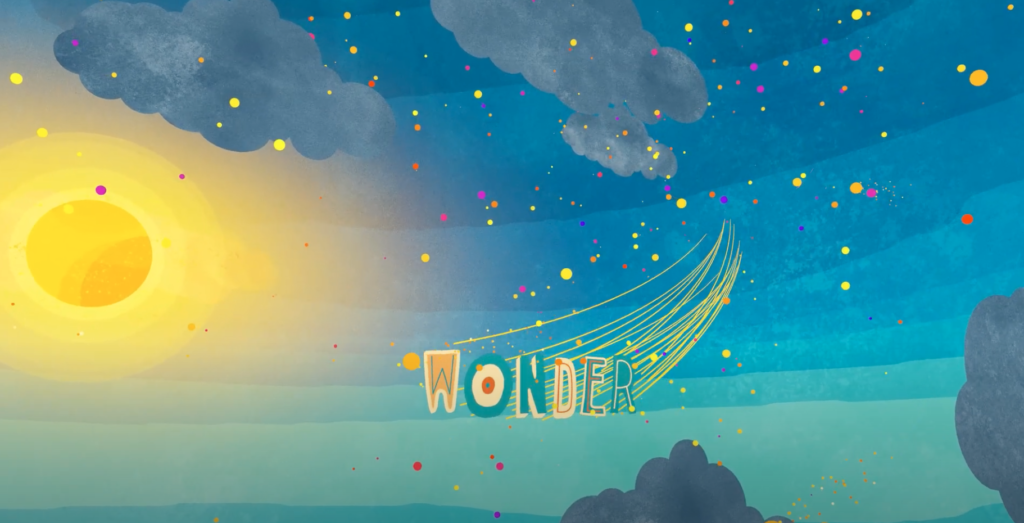
Every object tells a story.
I present to you an Adventure Through Time & Space. A story about four objects from the Aga Khan Museum collection. An astrolabe, a manuscript (101 Nights) – not 1001 -, a lampstand, and a basil pot (Alfabeguer). An innovative approach combining music and motion design to renew artefacts from museum collections, preserving their beauty, functionality, and stories. I hope to inspire kids and adults through this storytelling as much as these artefacts and musical repertoire have inspired people for centuries.
Repertoire: Nikolai Rimsky-Korsakov, The Legend of the Invisible City of Kitezh, Sheherazade.
Title: The Story of the Kalendar Prince The St Petersburg Philharmonic Orchestra, Yuri Temirkanov. Courtesy of Signum Records – thanks for supporting my endeavours in reviving the classics, making their magic and beauty accessible to people worldwide.
A special thanks to an incredible team at Beyond for their collaboration in the animation production.
About The Animation & Approach
The animation reinforces cultural literacy by engaging visitors with the history in cultural spaces like museums, notably a collection of artefacts dating back to Al-Andalus (Spain) consisting of metalwork, woodwork, and scientific instruments and manuscripts. The animation targets families of all ages, propelling a sense of curiosity and discovery about the objects’ functionality, history, craftsmanship and material production. Furthermore, the animation approaches cultural literacy from a global lens by emphasizing universal concepts, such as wonder, inspiration, and collaboration, cultivating cross-cultural communication through the objects. The animation activates objects through motion design where modern meets tradition, promoting the notion that diversity is an ancient space for collaboration and community building.
I created a model integrating motion design, objects, and the concept of cultural networks. The model aims to renew objects from permanent collections minable for their cultural connections, from which emerges new object relationships and storylines that museums can leverage. The value is an economical use of existing assets held in a museum coupled with a new approach to storytelling for audiences using pre-existing information in a new format – the model helps us reimagine the objects in a new way.
First, I study the objects and their provenance, create a database where I index the data and metadata, then use GIS (Geographical Information System) to map the information and identify cultural connections and clusters. Finally, I use the findings to outline the main concepts and build a storyline.
Then the real fun begins…
Concept design, script, scenes, incorporating cultural elements and patterns, design and animation. In this case, Rimsky Korsakov’s Sheherazade directly correlates with one of the objects in the collection (the 101 Nights). Korsakov’s the Kalendar Prince is a perfect accompaniment to the animation due to its wonderous feel and tone. I take careful consideration to harmonize delicate design movements with the musical rhythm.

